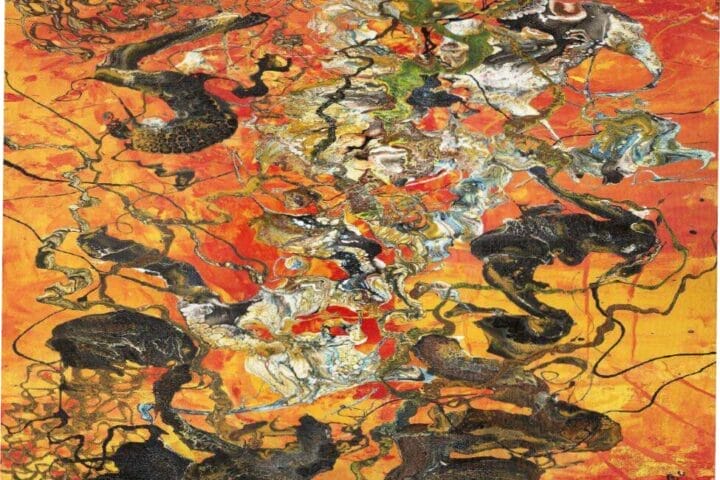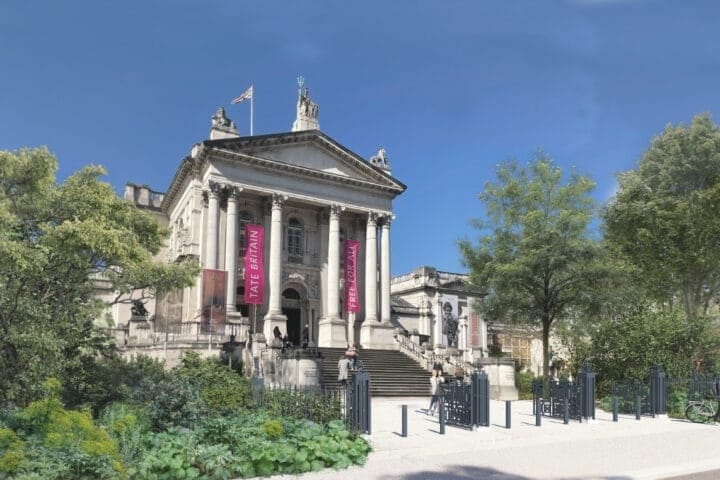Considered by many critics and curators to be the most significant Scottish painter of the twentieth century, John Bellany (1942-2013) will be celebrated in the summer exhibition from Open Eye Gallery. Coinciding with the 10th anniversary of his death, Open Eye Gallery will present works held by the Bellany Family, ranging from the urgency of his highly productive student years, until his final years of serenity, which he spent in the beauty of the Serchio valley in Italy. Close collaboration with the Bellany Family allows this exhibition to spotlight works that have rarely been on public display.
For their Festival show, Open Eye looks back on the works of a man who is remembered as a stylistic rebel who broke with the expectations of twentieth century art. In 1963, Bellany exhibited his paintings on the railings of Castle Terrace during the Edinburgh Festival. In the following two years, Bellany and fellow artist Sandy Moffat managed to audaciously display their work outside the buildings of the Scottish National Gallery and the Royal Scottish Academy, symbolically showing their status as outsiders to the art establishment.
Best known for documenting the lives of the fishing communities of the east coast of Scotland, Bellany was born in June 1942 in Port Seton, East Lothian, to a family with a heritage steeped in
the local community of fishermen. Both Port Seton and his mother’s hometown of Eyemouth were intensely religious communities, and the superstitions and traditions of Presbyterian faith would remain indelibly marked on Bellany’s imagination throughout his career.
At Edinburgh College of Art, Bellany was quickly making a name for himself as a rebel, rejecting the popular belle peinture style and championing a new realism in Scottish art. His affinity with Gustave Courbet, in whose work rural themes play out with the grandeur of history painting, is clear in his early paintings of fishing community of Port Seton. Bellany studied at the Royal College of Art from 1964, where he stood out as a figurative painter at a time when abstraction and Minimalism were fashionable.
By the 1970s, Bellany’s paintings were finally gaining recognition and he was named joint winner of the Athena Art Award, at the time the most valuable art prize in the UK. In addition to a host of solo exhibitions in galleries, a major retrospective of his work was held at the Scottish National Gallery of Modern Art in 1986 and at the Hamburg Kunsthalle two years later.
Following a serious illness in the 1980s, Bellany steadily regained his health. His work took a new direction, returning to classical subject matters, which had been a focus during his formal art education, as well as landscapes and seascapes for the first time. This show will feature works Hill Town of Correlia and Voyage to Barga from the period in which Bellany took up residence in Barga, Italy where much of the year was spent. This relocation brought about a further explosion of colour to his work that can be seen in these works.
A sense of serenity prevails in this late period as Bellany looked once again to the fishing communities of his childhood, Port Seton and Eyemouth. A string of museum retrospectives culminated in the major exhibition, A Passion for Life, at the Scottish National Gallery in 2012. His Bellany at 70 self-portrait will be included in this exhibition, this was produced for A Passion for Life in 2012 and has not been on public display since. Bellany summed up the importance of this large-scale Edinburgh exhibition, saying I was overcome with tears. It’s the pinnacle of my whole existence.
This extraordinary exhibition at Open Eye Gallery will present works held by the Bellany Family in order to explore Bellany’s life and career, highlighting different points in his life that illuminate the progression of his style throughout his career.
The Open Eye Gallery
34 Abercromby Pl, Edinburgh EH3 6QE, United Kingdom









